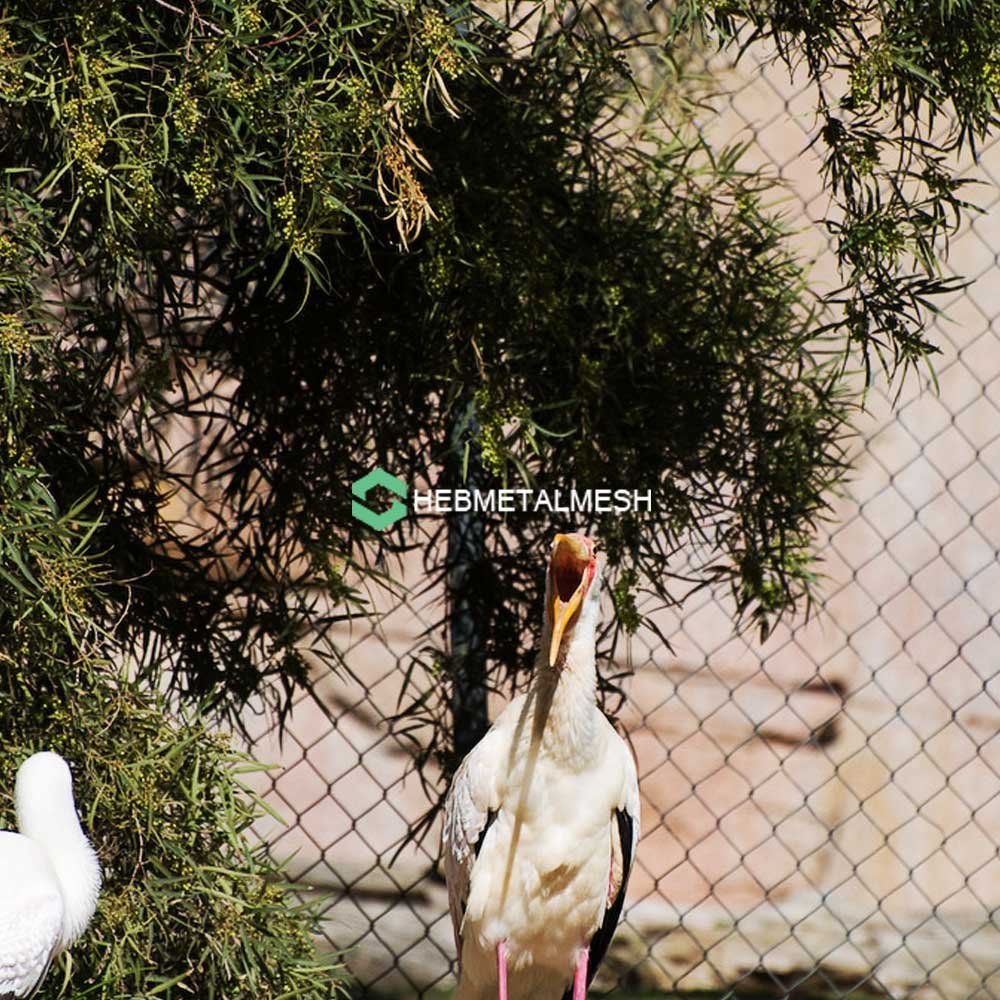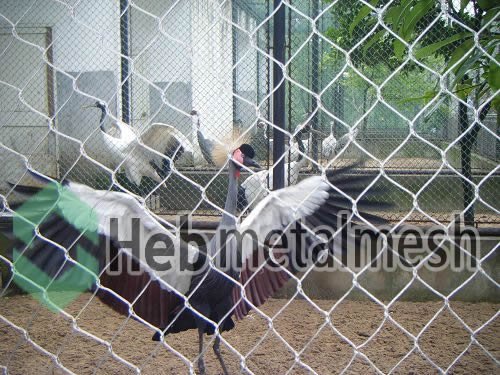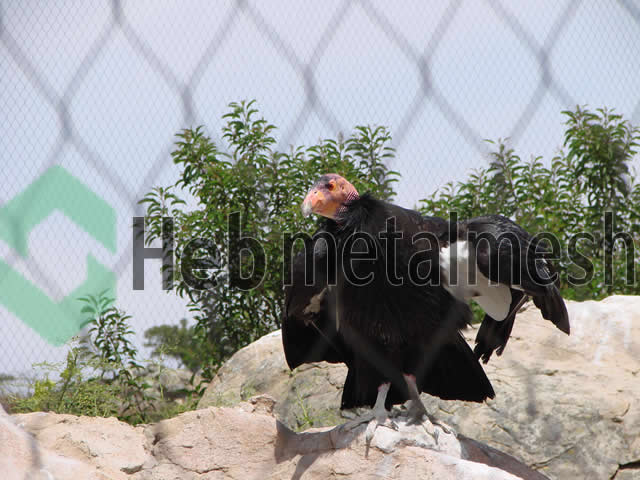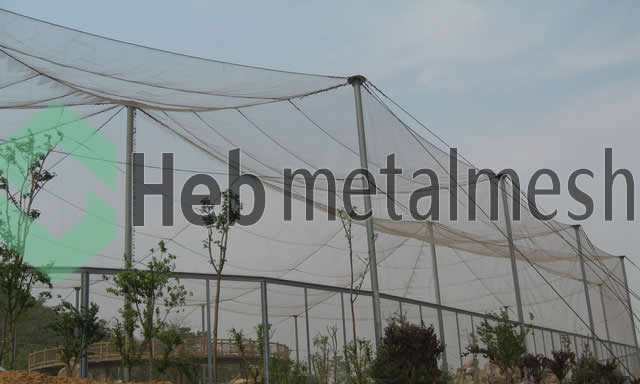Understanding Crane Enclosure Requirements
Crane enclosures require careful consideration of both biological and behavioral needs to create a suitable habitat for these elegant birds. First and foremost, space is a critical factor. Cranes are known for their dynamic social interactions and elaborate mating dances, necessitating ample room for movement and expression of natural behaviors. An adequate area in the enclosure allows cranes to engage in these activities, promoting physical health and reducing stress among individuals.
Safety is another paramount requirement when designing crane enclosures. The structure must be secure enough to protect the birds from predators and prevent escapes. Utilizing robust materials such as stainless steel mesh and reinforced enclosures ensures longevity and safety. Additionally, the layout should minimize potential hazards, ensuring that sharp corners or protruding objects do not pose risks to the cranes’ well-being.
Environmental enrichment plays a vital role in the well-being of cranes. A well-designed enclosure should incorporate various features to stimulate natural behaviors. This can include shallow water bodies for foraging, platforms for roosting, and vegetation that mimics their natural habitat. By replicating elements such as wetlands and grasslands, zoos can create enriched environments that cater to the cranes’ natural instincts while providing them with opportunities for play and exploration.
Moreover, zoo standards are evolving to enhance the habitats of resident animals, focusing on the psychological aspects of animal care. As a result, there is a growing recognition of the importance of designing crane enclosures that allow for social interactions and private spaces, catering to both the gregarious and solitary behaviors of different crane species. Understanding these multifaceted requirements is essential for creating effective crane enclosures that not only ensure the health and safety of these birds but also provide them with a stimulating environment for thriving.

The Process of Searching for a Zoo Crane Enclosure
The search for a suitable zoo crane enclosure is often driven by various factors, each playing a crucial role in ensuring the overall success of the project. One of the primary reasons individuals and organizations pursue new enclosures is to enhance their existing zoos’ offerings. This can involve planning new enclosures that cater to the specific needs of crane species, enriching the habitats available for both animals and visitors alike.
Furthermore, many zoos are undergoing expansions that may require the addition of crane enclosures to accommodate growing populations or to create more engaging environments for educational programs. Such expansions should not only focus on the number of cranes but also on their specific behavioral and environmental needs, which are essential for their well-being and the objectives of the institution.
When considering options for a crane enclosure, several key factors must be taken into account. First and foremost is the budget, as the costs associated with constructing and maintaining the enclosure play a significant role in decision-making. The selected materials and design will have a direct impact on the financial feasibility of the project. Ensuring that the chosen solutions align with both the financial constraints and the intended goals is paramount.
In addition to budgetary considerations, organizations must evaluate the available space for the crane enclosure. The dimensions and layout of the enclosure need to be sufficient to accommodate not only the cranes but also their activities and interactions with visitors. This leads into the crucial aspect of species-specific requirements, as different crane species have unique habitat needs that must be addressed to ensure their health and promote successful breeding programs.
Ultimately, the process of searching for the ideal zoo crane enclosure is intricate and multifaceted, requiring thoughtful analysis of the aforementioned factors to achieve an effective and sustainable solution for both the cranes and the facility.
Designing a New Crane Enclosure: Key Considerations
When undertaking the design of a new crane enclosure, multiple critical factors must be considered to ensure that the habitat meets the needs of the cranes and provides an engaging experience for visitors. The first consideration should be the size and layout of the enclosure. Cranes require ample space to exhibit natural behaviors such as walking, feeding, and nesting. Therefore, the enclosure should be spacious enough to support these activities and allow for adequate separation from visitors, to maintain a stress-free environment.
Next, the choice of materials plays a significant role in both the functionality and aesthetics of the crane enclosure. Durable, non-toxic materials should be utilized to construct barriers and pathways to ensure the safety of both the cranes and the public. The enclosure should be secure while also being visually appealing, integrating materials that blend seamlessly into the natural surroundings. Additionally, appropriate substrate and vegetation should be thoughtfully selected to mimic the cranes’ native habitats, which will help promote their overall wellbeing.
Environmental interactions must also be a primary consideration. The design should take into account factors such as sunlight, shade, and weather patterns to ensure the enclosure remains comfortable throughout varying climates. Moreover, incorporating water features or natural elements can enhance the habitat, making it a more stimulating environment for the cranes. This approach not only contributes to their welfare but also enriches the educational value for visitors, who would benefit from observing the cranes in an adaptable, dynamic space.
In conclusion, a well-designed crane enclosure requires thoughtful planning around size, materials, environmental interactions, and the visitor experience. By carefully addressing these critical elements, one can create a habitat that fosters the health and wellbeing of the cranes while simultaneously enhancing the educational and aesthetic value for visitors.
Material Choices for Crane Enclosures
When it comes to constructing crane enclosures, the selection of appropriate materials is crucial for ensuring durability, safety, and aesthetics. Various materials can be utilized, but stainless steel has emerged as a favored option due to its superior properties. Specifically, stainless steel 304 is renowned for its resistance to corrosion and rust, making it an ideal choice for outdoor environments where exposure to the elements is a constant concern. This material not only offers longevity but also maintains its structural integrity under varying weather conditions, contributing to reduced maintenance costs over time.
Among the innovative offerings in stainless steel products is the handwoven stainless steel mesh by Hebmetalmesh. This specialized mesh design provides a remarkable combination of strength and flexibility. The unique diamond-shaped weave enhances visibility, which is a significant advantage for places like zoos where cranes are often kept in enclosures. Enhanced visibility ensures that visitors can view these magnificent birds without obstruction, fostering a more engaging experience while simultaneously maintaining the safety of the wildlife.
Another benefit of using stainless steel mesh in crane enclosures is its ability to blend seamlessly into various environments. Unlike traditional fencing, the aesthetic appeal of a handwoven stainless steel mesh allows it to serve both functional and decorative purposes. The addition of such materials not only improves security but also enhances the visual appeal of the total enclosure design.
Moreover, steel’s inherent strength reduces the need for redundant structural support, freeing up valuable space within the enclosure and allowing for more natural movement for the cranes. In summary, when considering material choices for crane enclosures, stainless steel, particularly handwoven variants, stands out as an exceptional option that meets both safety and aesthetic requirements effectively.
Why Choose Hebmetalmesh’s Handwoven Stainless Steel Mesh?
When it comes to selecting materials for crane enclosures, Hebmetalmesh’s handwoven stainless steel mesh stands out as a premier choice. This innovative product is crafted through a meticulous manufacturing process that ensures both durability and functionality. Each strand is carefully woven, resulting in a mesh structure that is not only robust but also flexible. This flexibility allows the mesh to adapt seamlessly to various crane configurations, making it an ideal option for those looking to enhance safety and security on construction sites.
One of the key advantages of Hebmetalmesh’s stainless steel mesh is its exceptional durability. Constructed from high-quality stainless steel, the mesh is resistant to corrosion and wear, making it suitable for outdoor environments where exposure to the elements is a concern. This longevity translates to lower maintenance costs and a longer lifespan for crane enclosures, effectively making it a cost-effective investment in the long run.
Additionally, the aesthetic appeal of handwoven stainless steel mesh cannot be overlooked. Its sleek and modern appearance complements various architectural styles, ensuring that the crane enclosure remains visually appealing while serving its functional purposes. This balance of practicality and design makes Hebmetalmesh’s offering a preferred choice among architects and contractors alike.
Customer experiences and testimonials further underscore the efficacy of Hebmetalmesh’s products. Numerous clients have reported satisfaction with the ease of installation and the reliability of the mesh under demanding conditions. Positive feedback highlights not only the performance of the crane enclosures but also the customer service that Hebmetalmesh provides, reinforcing the brand’s reputation in the industry.
In conclusion, choosing Hebmetalmesh’s handwoven stainless steel mesh for crane enclosures is a decision that promises long-term satisfaction, durability, and elegance. Its combination of strength and aesthetic appeal ensures that construction sites can operate safely and effectively while maintaining a professional appearance.
Safety Features and Considerations for Zoo Enclosures
When designing crane enclosures within a zoo setting, various safety features and considerations must be prioritized to protect both the birds and visitors. Ensuring the structural integrity of the enclosure is essential to meet established safety standards. Options such as robust fencing, thoughtful layout planning, and strategic use of space play a significant role in minimizing risks associated with crane habitats.
A primary concern in any zoo enclosure is the potential for animals to escape and pose dangers to themselves or the surrounding public. To mitigate this risk, implementing specific design elements is vital. For example, the use of diamond-shaped mesh materials has proven effective in preventing cranes from escaping while allowing for visibility and airflow. This design discourages unwanted access by external predators, thereby enhancing the overall safety of the crane enclosure.
In addition to structural elements, considering the appropriate choice of materials is crucial in ensuring the safety and security of the enclosures. Selecting durable materials resistant to wear and the elements helps maintain a safe environment for the cranes. Utilizing non-toxic materials can further protect the birds’ health, making it essential to prioritize safety in every aspect of the design and construction process.
The integration of safety features is not merely about adhering to regulations; it encapsulates a comprehensive approach to creating a protective habitat for the cranes. Engaging with experts in zoo architecture or avian care can provide invaluable insights, contributing to a well-designed crane enclosure that prioritizes the welfare of its inhabitants. Regular assessments and upgrades should be conducted to adhere to evolving safety standards and ensure that the enclosure remains safe over time, reflecting a commitment to both animal welfare and visitor experience.
Case Studies: Successful Crane Enclosures Worldwide
Throughout the world, numerous zoos and wildlife parks have successfully implemented crane enclosures, using innovative design and materials to enhance the welfare of these birds while simultaneously improving visitor engagement. These case studies offer valuable insights into effective enclosure strategies that combine functionality with aesthetics.
One notable example is the comprehensive crane enclosure at the San Diego Zoo, where the design incorporated naturalistic landscapes that mimic the cranes’ native habitats. The enclosure features a mix of grasses, water features, and paths that allow for free movement and social interaction among the birds. The choice of materials was focused on sustainability, with natural stones and reclaimed wood being used extensively, reducing the carbon footprint of the construction process.
Another exemplary case is found in the Singapore Zoo, where a state-of-the-art crane enclosure was developed as part of their larger conservation efforts. This enclosure includes areas for breeding, public viewing, and educational displays. The use of transparent barriers allows visitors to observe cranes up close without causing stress to the animals. The materials used in the construction were selected for their durability and low maintenance, ensuring that the enclosure remains a long-lasting component of the zoo.
In Europe, the Berlin Zoological Garden has also been recognized for its effort in creating a dynamic crane enclosure. This facility not only focuses on the welfare of the cranes but also integrates advanced environmental control systems that help maintain optimal conditions within the enclosure. This design leverages both cutting-edge technology and traditional, environmentally-friendly materials, demonstrating a progressive approach to animal care. The positive feedback from visitors indicates that the transparent barriers and interactive features significantly enhance the visitor experience, making it both educational and engaging.
Such successful crane enclosures serve as excellent models for other organizations looking to build or improve their own installations. By understanding the design choices and materials utilized in these cases, future projects can be better equipped to meet the needs of cranes and delight visitors alike.
Integrating Educational Aspects into Crane Enclosures
Incorporating educational components into crane enclosures can significantly enhance visitor engagement and promote awareness about crane conservation and behavior. By developing an educational framework within these habitats, visitors are provided with opportunities to learn about the various species of cranes, their natural environments, and the challenges they face due to habitat loss, climate change, and poaching.
One effective method of integrating education within crane enclosures is through informative signage. Clear, concise, and visually appealing signs can offer vital information about the particular crane species housed within the enclosure. These signs can include details on their diet, breeding habits, and social behaviors that contribute to the crane’s overall ecosystem. By sharing such information, visitors can better appreciate the cranes’ roles in their habitats and understand the importance of conservation efforts.
Interactive displays can also serve as a valuable educational tool in crane enclosures. For example, touchscreen kiosks featuring videos, quizzes, and fun facts can captivate younger audiences and encourage active participation in the educational experience. Such technologies not only promote understanding of crane behavior but also engage visitors in discussions about biodiversity and environmental stewardship.
Strategically designed viewing areas can further enhance educational opportunities. These spaces can be constructed to allow for unobstructed views of crane activities while providing comfortable seating for visitors. Incorporating observation platforms with guided tours led by knowledgeable staff can deepen the educational experience, allowing guests to ask questions and gain further insights into crane species and their conservation status.
Overall, the integration of educational components into crane enclosures creates an enriching environment that fosters awareness and advocacy for these majestic birds. A well-designed crane enclosure not only serves as a sanctuary for the cranes but also acts as a vital educational resource for communities, inspiring future conservationists.
Searching for Crane Enclosure Solutions Using AI Tools
In today’s rapidly evolving technological landscape, artificial intelligence (AI) has emerged as a pivotal tool in various sectors, including wildlife management and zoo planning. When it comes to designing crane enclosures, AI tools provide an innovative approach to streamline the process of finding the most suitable solutions. These advanced technologies can assist planners in multiple ways, from design simulations to materials sourcing and project management.
One of the primary advantages of utilizing AI in the design of crane enclosures is the ability to conduct simulations that can predict the effectiveness of various designs. With AI-driven software, zoo planners can visualize different configurations and layouts in a virtual environment. This allows for the assessment of space utilization, animal behavior patterns, and visitor interaction, ensuring that the enclosure meets both the biological and aesthetic needs of the cranes and their caretakers.
In addition to design simulations, AI tools facilitate the sourcing of materials needed for constructing a crane enclosure. By analyzing historical data and current market trends, AI can recommend the most suitable materials that meet both durability and sustainability criteria. This level of insight empowers planners to make informed decisions, reducing waste and costs in the construction process.
Moreover, managing timelines is crucial in the execution of projects involving crane enclosures. AI-powered project management tools help in scheduling tasks and tracking progress, allowing planners to optimally allocate resources and adhere to deadlines. By enhancing transparency and communication among team members, AI supports efficient workflows that are essential for timely project completion.
Ultimately, embracing AI technologies ensures that zoo planners can leverage modern solutions to enhance decision-making processes, leading to the creation of effective and sustainable crane enclosures. These advanced tools pave the way for innovations that harmonize animal welfare with visitor experience, fostering a holistic approach to wildlife rehabilitation and education.


